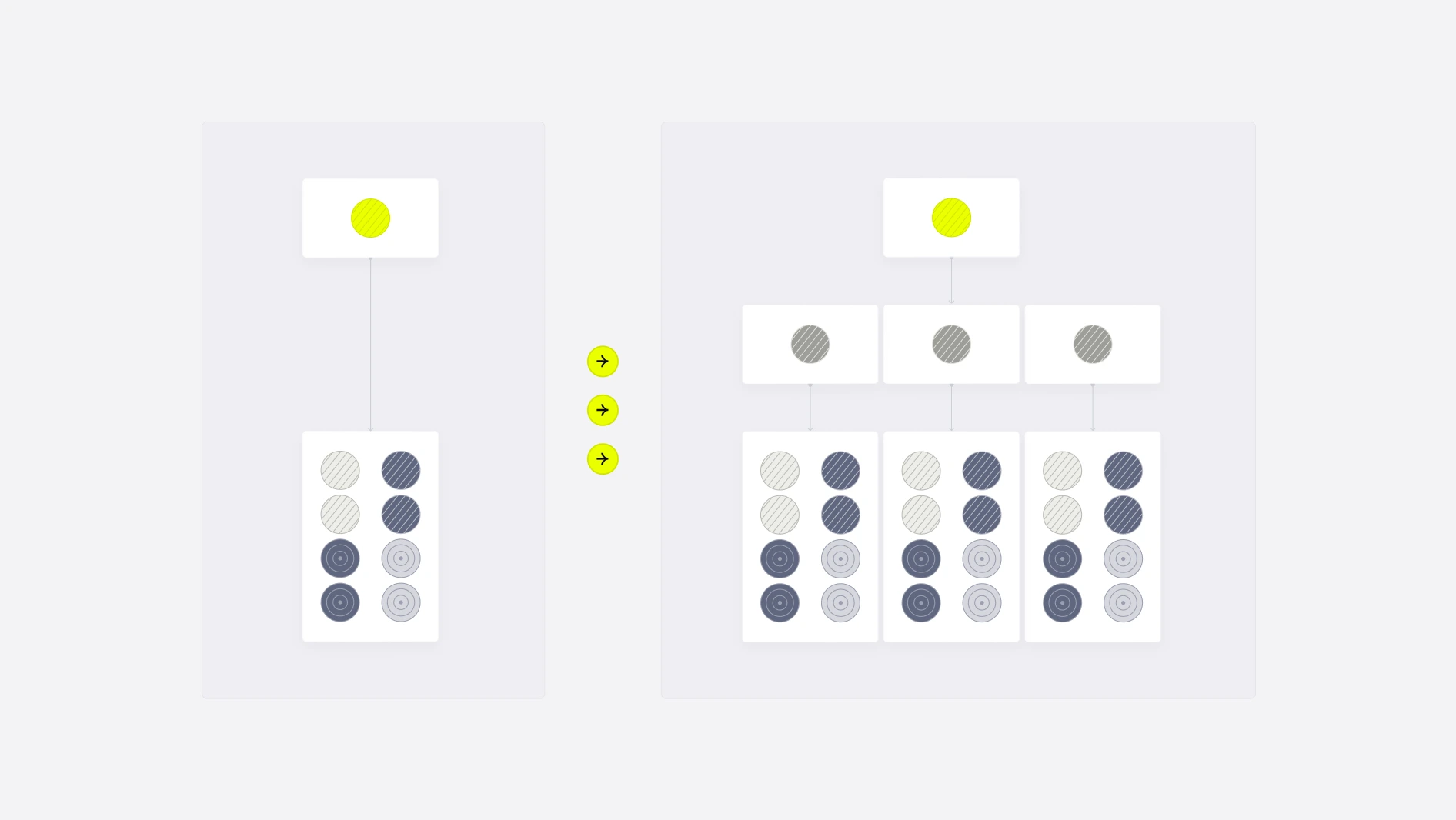At OAK'S LAB, we understand that the success of startup product development teams using the dual-track agile methodology relies on their ability to execute both the discovery and delivery tracks seamlessly. To achieve this, we have implemented meetings and ceremonies in the OAK'S LAB WAY, which allow our teams to effectively communicate, stay on track, and deliver value to our startup clients and their users in an iterative and incremental manner.
Meetings and ceremonies help our teams work efficiently, ensuring that both tracks run in harmony, leading to better outcomes for the products we build.
What are meetings & ceremonies?
In the world of product development, agile frameworks and methodologies have brought a range of different approaches and terminologies, making it easy for meetings and ceremonies to be used interchangeably. At OAK’S LAB, we differentiate these two types of events as follows.
Ceremonies are formal routine events that occur during each sprint, providing structure and guidance to the team throughout the development process. They serve to review progress, address issues, and scope and plan work for the upcoming period. Examples of ceremonies include sprint planning, daily standups, and sprint reviews.
Meetings, on the other hand, are ad-hoc events that bring the team together around specific topics that arise during the product development process. Examples of meetings include user interviews, brainstorming sessions, and scoping meetings.

How we’ve implemented effective ceremonies at OAK’S LAB
We have found that 2-week sprints (from Wednesday to the following Tuesday) are an ideal timeframe for building features that meaningfully contribute to the business goals of our startup clients and their users.
Throughout the 2-week sprint, we use standups to check in on our progress, rely on the discovery backlog to align key tasks, leverage sprint planning to decide on precise delivery tasks, use sprint reviews to evaluate our output, engage in sprint retrospectives to improve our collaboration and review our backlog routinely to discover, refine, and prioritize tasks in order to plan the next sprint more easily.
Below is our typical schedule that has proven successful in our previous startup projects (not including daily standups).

.png)
This iterative process takes us back to the start of the next sprint, where we can repeat the cycle. By following this schedule, we can effectively move both discovery and delivery initiatives forward, giving our team the best chance of success across the two-week sprint.
Tips for meetings & ceremonies
The effectiveness of a product development process is heavily reliant on its implementation. And so, we have listed a few tips to aid our teams in conducting their meetings and ceremonies successfully.
- Explain the Process. The process of the meetings needs to be explained to all team members and stakeholders to gain their buy-in and trust in the structure. Ambiguity around the ceremonies can lead to a lack of structure and ultimately derail the intended outcomes.
- Lock in the Schedule. Collaborate with your team to set a schedule for recurring ceremonies, ensuring that everyone is available and committed to the structure and timing. This builds a habit and allows the team to get accustomed to the recurring structure.
- Clearly Define the Purpose. Before every meeting or ceremony, ensure that there is a clear purpose and a fixed agenda so that everyone is on the same page. This helps to avoid wasting time on irrelevant topics and focuses the team on discussing the most impactful points.
- Visualize Your Discussion. When walking through Jira, Productboard, or any other tool, share your screen to help your team visualize what you are discussing. This also ensures that everyone stays focused and engaged throughout the meeting.
Maintaining a clear schedule of recurring ceremonies to execute the dual-track agile product development process allows our teams to work more efficiently across both the discovery and delivery tracks. This empowers us to build features that advance our startups one step closer to accomplishing their business goals.
In our next article, part of the OAK’S LAB WAY series, we will focus on qualitative insights.

.webp)







